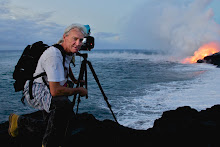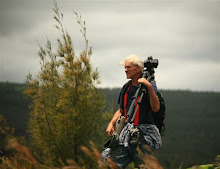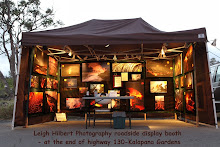Many people are making the one hour trek (one way) out to see this lava flow but we are also seeing more injuries and people getting lost out there. If this is your first time hiking to distant lava, I highly recommend going with one of the well established tour guiding outfits; ask around for the most acknowledged guides because their experience and safety will better ensure you having a good trip there and back.
~
~
Lava breakouts are not just at the ocean, there are many molten ruptures taking place day and night all along and on top of the entire coastal plains; from the base of the Pulama Pali two miles to the shoreline.
,
,
Also, back to safety; variable winds lately can switch the sulphur dioxide, degassing from the entire coastal plains, right into your lungs. Not good to breath!!. This wind switching is even more of a danger where the lava enters the sea. There we have sulphuric acids and tiny glass particles and scalding steam; all forming constantly. These things can do more than just irritate the eyes, throat and lungs-- they can quickly cause severe damage. A good respirator should be close in hand when approaching the coastal ocean entry lava zone...
,
.
Well gee.... since I am on a safety rant, maybe it's time to also remind hikers to the lava that the most dangerous area is an ocean entry that has become established and consistent. It is these areas that are quickly forming new land under water and along the flow front above the water. These are called deltas or lava benches. This is very unstable new land that is being undermined by the sea and is very weak rock; like making cement with too much sand in the mix...
,
'
Lava benches will break off without notice; both small sections or hundreds of feet at at time. The result can be extremely explosive; tephra, molten lava rock flying through the air in all directions, a local szunami of hot scalding water, a rush of sulphuric acid and scalding steam, and solid inland cliffs fracturing into the ocean. I am serious about this, I have witnessed this happen many times; luckily from a safe distance. These bench collapses are often small sections but as the one I recorded in Nov. 2010 (two miles east of the current entry) you can see the violent action of a quarter mile of new delta suddenly breaking off in sections in the pre-dawn light. My original blog post on the event HERE
Video here below (turn your audio up :): 
































































